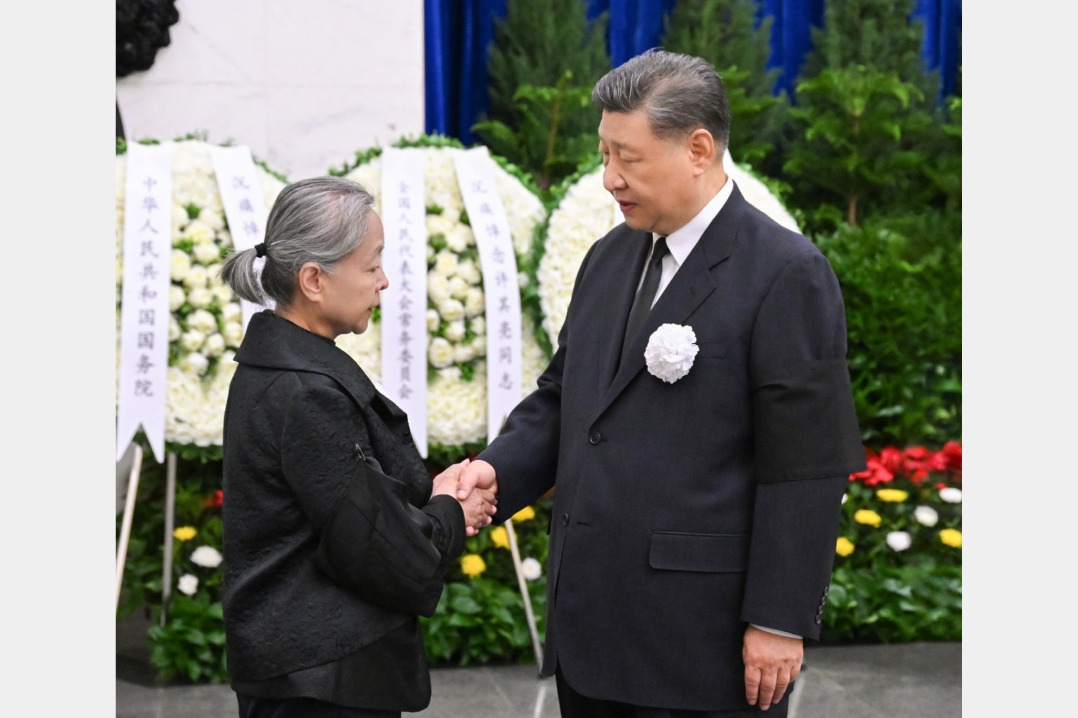Green algorithms leading sustainable revolution


The increasing embrace of artificial intelligence across the world raises a pressing question: Can innovation harmoniously align with ecological sustainability? China, already a global leader in AI, has the opportunity, and responsibility, to pioneer a sustainable approach that integrates cutting-edge technology with environmental stewardship. By promoting green AI with Chinese characteristics, China can set a new global standard in sustainable technological advancement.
Traditional AI development often comes at a substantial environmental cost. Training a single advanced AI model can emit carbon dioxide comparable to the lifetime emissions of multiple cars. As AI becomes ubiquitous across industries — from automated vehicles to precision farming — the demand for more energy-efficient algorithms, sustainable hardware and eco-friendly deployment strategies becomes critical.
AI research and commercial deployment often rely on large-scale data centers, which consume huge amounts of electricity and water for cooling. Without efforts to make these facilities eco-friendly, the carbon footprint of AI could increase exponentially, undermining global efforts to achieve the climate targets. The energy-intensive nature of deep-learning training, too, poses accessibility concerns: smaller enterprises and research institutions may lack the resources to participate in such programs, stifling innovation diversity.
As AI drives smart cities, autonomous systems and on-demand digital services, unchecked computational demand risks overburdening power grids and exacerbating pollution in already vulnerable regions. Green AI prioritizes energy-aware practices, from algorithmic efficiency to sustainable infrastructure planning, ensuring that AI's growth supports rather than sabotages environmental objectives.
By optimizing model architectures to reduce computational complexity, leveraging renewable energy sources for data centers, and deploying lightweight algorithms on edge devices, green AI minimizes both operational costs and ecological footprints. Adopting this holistic approach — balancing performance with environmental impact — will protect planetary health while maintaining AI's transformative potential. Investing in green AI can create a more accessible, equitable and resilient AI ecosystem for generations to come.
China is uniquely positioned to spearhead this sustainable AI revolution. The country's coordinated approach, abundant data resources, robust infrastructure and robust innovation culture are distinct advantages. China's pledge to peak its carbon emissions before 2030 and achieve carbon neutrality before 2060 provides a clear policy direction.
By aligning AI development with these ambitious climate targets, China can transform its industries. For example, setting stringent efficiency standards for AI data centers and campuses will ensure technological advancement supports national sustainability objectives. China can also leverage its global leadership in renewable energy — accounting for nearly half of global solar photovoltaic panel production and boasting the highest wind power-generation capacity — to sustainably power energy-intensive AI facilities, from the wind-driven data centers in the Inner Mongolia autonomous region to the solar-integrated tech parks in Guangdong province.
China's advancement in AI chip manufacturing — such as Huawei's Ascend series, Alibaba's Hanguang 800 and Cambricon's MLU chips — is notable for both performance and energy efficiency. These chips, measured in terms of TOPS/W (trillions of operations per second per watt), significantly reduce power consumption. Further investment in miniaturized "tiny AI" chips for everyday edge devices promises even greater sustainability gains, reducing energy use in smart homes, factories and urban environments.
Leading research institutions, including Tsinghua University, Peking University and the Chinese Academy of Sciences, are pioneering algorithmic innovations — such as model pruning, quantization and neural architecture search — to create compact, efficient AI models. These models retain performance while dramatically reducing the energy required for training and inference. Open-sourcing these innovations can accelerate widespread adoption by industries, maximizing their environmental impact.
To lead the sustainable AI revolution, China must also champion robust ethical frameworks and transparent practices. Ensuring fairness and accountability in AI decision-making processes is critical for earning international credibility. China can spearhead initiatives to develop guidelines that address concerns over data privacy, algorithmic transparency, bias mitigation and responsible data governance.
China can strengthen trust, both domestically and globally, by adhering to ethical practices, such as algorithm audits and public disclosures of AI system performance and limitations, and promote responsible and sustainable AI use by establishing independent oversight bodies and fostering collaborative dialogues globally.
The pursuit of innovation without sustainability risks compromising our future. With its strategic foresight, vast resources and innovative capacity, China has the capacity to redefine the global trajectory of AI. By integrating ecological responsibility into every aspect of AI — from chip design and algorithm development to real-world applications — China can lead not just the AI revolution but also the sustainable AI revolution. Green AI with Chinese characteristics has the potential to create a brighter, cleaner and more responsible world for all.
The author is a professor of Environmental Engineering and deputy dean of Undergraduate Studies at Guangdong Technion-Israel Institute of Technology in Shantou, Guangdong province.
The views don't necessarily reflect those of China Daily.
If you have a specific expertise, or would like to share your thought about our stories, then send us your writings at opinion@chinadaily.com.cn, and comment@chinadaily.com.cn.

































